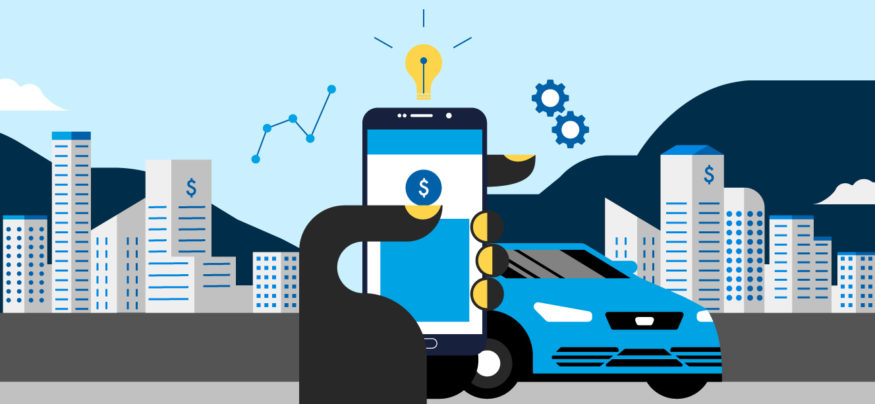From retail and commercial banking to wealth management and insurance, mobile technology is transforming the way people handle their finances and paving the way for the future of banking. Mobile technology continues to offer ways to help the banking industry move towards a more customer-centric business model. With the rise of mobile-banking among customers and their digital expectations, retail banks need to reconsider their traditional business strategies. In order to thrive in a changing industry, retail banks need to transform their brick-and-mortar branches into immersive financial centers equipped with cutting edge technology, automation and the flexibility that customers expect.
Mobile-Centric Work Is Here to Stay
The rise of mobile devices used by clients and employees in business activities isn’t just industry speculation. Fifty percent prefer to use their mobile phones to check their balances (as opposed to 22 percent who prefer to use laptops), according to Business Insider. After years of focus on BYOD, today’s modern workers are using cloud-based solutions, such as Dropbox or Trello, on their personal devices to collaborate with others.
How Retail Banks Can Thrive in Today's Digital Age
Explore short- and long-term opportunities to transform brick-and-mortar branch experiences. Download Now
Seventy percent of IT leaders say tablets and smartphones will ultimately replace PCs in financial services, and 60 percent say they are strongly committed to expanding the use of smartphones, tablets and mobile-enabled printers.
The preference for using large-screen mobile devices such as the Galaxy S8 over other options, like desktops, spans a variety of activities. Just as transferring funds or paying a bill is now done more by phone than desktop, workers also prefer to use modern, large-screen devices with the newest features, security and support for the latest networks such as 5G.
Platforms and Integrations
Stepping back, the bank of the future has an opportunity to win over those who expect that using a mobile-first solution is about more than just the devices. In recent years, the growth of platforms such as Salesforce and Slack reveal that there’s value for both businesses and consumers in integration.
Employees don’t just want a different app for everything, with an ever-expanding list of what is up on their screen and taking up real estate, it’s hard to remember which services are best for which task. What’s important today is to be mobile-centric, with robust integrations with best-in-class applications and platforms.
Just as a client might work with a financial advisor who can assemble a best-in-class solution, with technology and services from Schwab and reporting from a provider like Orion, advisors of the future must be able to meet clients on the mobile platforms they use, with platforms like DocuSign spanning the category of consumer and employee.
Adapting to Change
The financial services industry will have to adapt to the changing needs of consumers, but the road to future banking isn’t as cut and dry as finance IT leaders may think it is.
Despite a lot of press coverage of a 2016 Javelin research study that showed the growth of mobile banking over traditional channels, thought leader Bob Meara of Celent noted the danger of dismissing traditional services such as the use of ATMs or branches. Meara explains that an “either/or” point of view on mobile versus more traditional methods misses the takeaway for banks to “create and sustain a compelling customer experience across all points of engagement.”
The stakes are high for incumbents, since a large set of startup and growth-focused FinTech firms are competing or helping to power an entirely new ecosystem of solutions. While some of the new entrants, such as Betterment or Wealthfront, show strength with their focus on user experience and simplified, mobile-centric workflows, larger institutions can compete on more or less equal terms by investing in new mobile platforms and giving bankers, financial advisors and others a broad-based solution.
Learning From Retail
A mindset focused on user experience, new workflows and mobile can lead to opportunities to better service mobile-centric customers. “Why is it that smartphones can notify you the moment there’s a sale at Target, but if a client’s retirement plan goes off the rails it won’t be addressed until a quarterly review?” John Horneff, director of marketing at Quovo, wrote in Wealth Management.
Similarly, the growth of very large-scale digital displays in retail spaces ranging from Times Square to airports has shown how technology can enable delivery of high-impact messages. Innovators can learn to improve their branch locations and usher in the future of banking for both employees and customers.
Mobile-centricity and integration are the two key 2017 priorities that IT leaders in finance must recognize to continue engaging with business stakeholders and customers. This will enable them to deliver faster, flexible and more natural ways for employees to collaborate and work to help clients achieve their financial goals.
Looking for more exciting technology for the finance world? Explore our full line of FinTech solutions.









